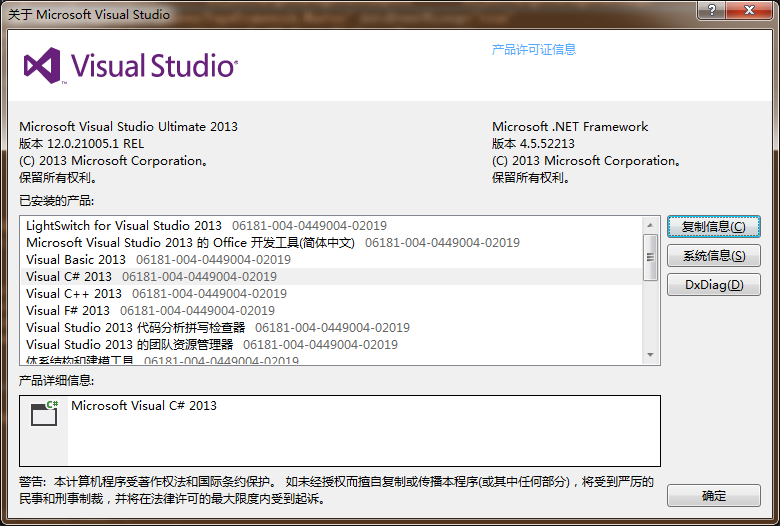What would be the best way to fill a C# struct from a byte[] array where the data was from a C/C++ struct? The C struct would look something like this (my C is very rusty):
typedef OldStuff {
CHAR Name[8];
UInt32 User;
CHAR Location[8];
UInt32 TimeStamp;
UInt32 Sequence;
CHAR Tracking[16];
CHAR Filler[12];
}
And would fill something like this:
[StructLayout(LayoutKind.Explicit, Size = 56, Pack = 1)]
public struct NewStuff
{
[MarshalAs(UnmanagedType.ByValTStr, SizeConst = 8)]
[FieldOffset(0)]
public string Name;
[MarshalAs(UnmanagedType.U4)]
[FieldOffset(8)]
public uint User;
[MarshalAs(UnmanagedType.ByValTStr, SizeConst = 8)]
[FieldOffset(12)]
public string Location;
[MarshalAs(UnmanagedType.U4)]
[FieldOffset(20)]
public uint TimeStamp;
[MarshalAs(UnmanagedType.U4)]
[FieldOffset(24)]
public uint Sequence;
[MarshalAs(UnmanagedType.ByValTStr, SizeConst = 16)]
[FieldOffset(28)]
public string Tracking;
}
What is best way to copy OldStuff to NewStuff, if OldStuff was passed as byte[] array?
I\'m currently doing something like the following, but it feels kind of clunky.
GCHandle handle;
NewStuff MyStuff;
int BufferSize = Marshal.SizeOf(typeof(NewStuff));
byte[] buff = new byte[BufferSize];
Array.Copy(SomeByteArray, 0, buff, 0, BufferSize);
handle = GCHandle.Alloc(buff, GCHandleType.Pinned);
MyStuff = (NewStuff)Marshal.PtrToStructure(handle.AddrOfPinnedObject(), typeof(NewStuff));
handle.Free();
Is there better way to accomplish this?
Would using the BinaryReader class offer any performance gains over pinning the memory and using Marshal.PtrStructure?
From what I can see in that context, you don\'t need to copy SomeByteArray into a buffer. You simply need to get the handle from SomeByteArray, pin it, copy the IntPtr data using PtrToStructure and then release. No need for a copy.
That would be:
NewStuff ByteArrayToNewStuff(byte[] bytes)
{
GCHandle handle = GCHandle.Alloc(bytes, GCHandleType.Pinned);
try
{
NewStuff stuff = (NewStuff)Marshal.PtrToStructure(handle.AddrOfPinnedObject(), typeof(NewStuff));
}
finally
{
handle.Free();
}
return stuff;
}
Generic version:
T ByteArrayToStructure<T>(byte[] bytes) where T: struct
{
T stuff;
GCHandle handle = GCHandle.Alloc(bytes, GCHandleType.Pinned);
try
{
stuff = (T)Marshal.PtrToStructure(handle.AddrOfPinnedObject(), typeof(T));
}
finally
{
handle.Free();
}
return stuff;
}
Simpler version (requires unsafe switch):
unsafe T ByteArrayToStructure<T>(byte[] bytes) where T : struct
{
fixed (byte* ptr = &bytes[0])
{
return (T)Marshal.PtrToStructure((IntPtr)ptr, typeof(T));
}
}
Here is an exception safe version of the accepted answer:
public static T ByteArrayToStructure<T>(byte[] bytes) where T : struct
{
var handle = GCHandle.Alloc(bytes, GCHandleType.Pinned);
try {
return (T) Marshal.PtrToStructure(handle.AddrOfPinnedObject(), typeof(T));
}
finally {
handle.Free();
}
}
Watch out for packing issues. In the example you gave all fields are at the obvious offsets because everything is on 4 byte boundaries but this will not always be the case. Visual C++ packs on 8 byte boundaries by default.
object ByteArrayToStructure(byte[] bytearray, object structureObj, int position)
{
int length = Marshal.SizeOf(structureObj);
IntPtr ptr = Marshal.AllocHGlobal(length);
Marshal.Copy(bytearray, 0, ptr, length);
structureObj = Marshal.PtrToStructure(Marshal.UnsafeAddrOfPinnedArrayElement(bytearray, position), structureObj.GetType());
Marshal.FreeHGlobal(ptr);
return structureObj;
}
Have this
If you have a byte[] you should be able to use the BinaryReader class and set values on NewStuff using the available ReadX methods.



